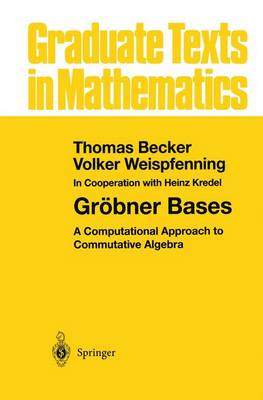Graduate Texts in Mathematics
1 primary work • 2 total works
Book 141
The origins of the mathematics in this book date back more than two thou sand years, as can be seen from the fact that one of the most important algorithms presented here bears the name of the Greek mathematician Eu clid. The word "algorithm" as well as the key word "algebra" in the title of this book come from the name and the work of the ninth-century scientist Mohammed ibn Musa al-Khowarizmi, who was born in what is now Uzbek istan and worked in Baghdad at the court of Harun al-Rashid's son. The word "algorithm" is actually a westernization of al-Khowarizmi's name, while "algebra" derives from "al-jabr," a term that appears in the title of his book Kitab al-jabr wa'l muqabala, where he discusses symbolic methods for the solution of equations. This close connection between algebra and al gorithms lasted roughly up to the beginning of this century; until then, the primary goal of algebra was the design of constructive methods for solving equations by means of symbolic transformations. During the second half of the nineteenth century, a new line of thought began to enter algebra from the realm of geometry, where it had been successful since Euclid's time, namely, the axiomatic method.
v. 141
This book provides a comprehensive treatment of Gr bner bases theory embedded in an introduction to commutative algebra from a computational point of view. The centerpiece of Gr bner bases theory is the Buchberger algorithm, which provides a common generalization of the Euclidean algorithm and the Gaussian elimination algorithm to multivariate polynomial rings. The book explains how the Buchberger algorithm and the theory surrounding it are eminently important both for the mathematical theory and for computational applications. A number of results such as optimized version of the Buchberger algorithm are presented in textbook format for the first time. This book requires no prerequisites other than the mathematical maturity of an advanced undergraduate and is therefore well suited for use as a textbook. At the same time, the comprehensive treatment makes it a valuable source of reference on Gr bner bases theory for mathematicians, computer scientists, and others. Placing a strong emphasis on algorithms and their verification, while making no sacrifices in mathematical rigor, the book spans a bridge between mathematics and computer science.

